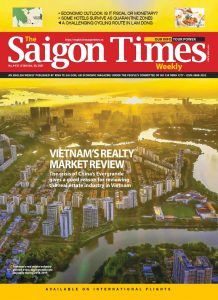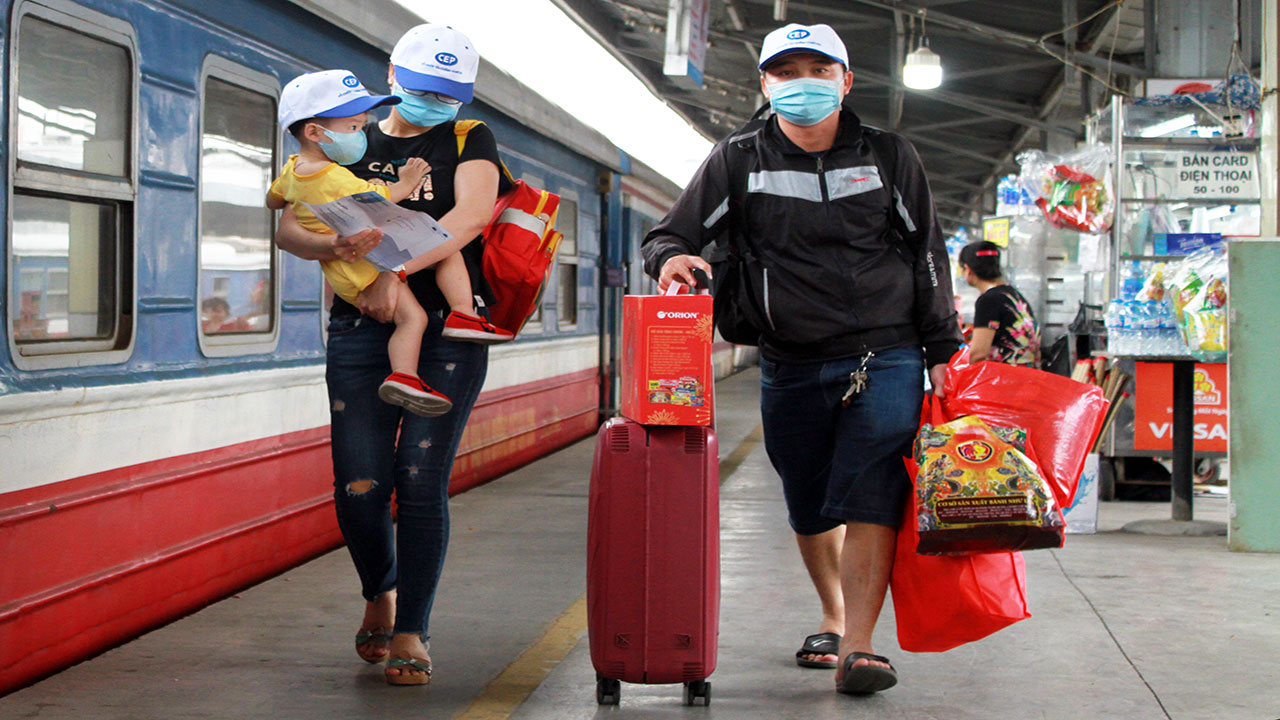The national railway network by 2030 will include the construction of nine new train routes totaling 2,362 kilometers in length, and the renovation of the seven existing rail routes covering 2,440 kilometers. The overall investment of this ambitious scheme is projected at VND240 trillion which will be mobilized from the State budget and other sources.
According to the planning of the railway network for 2021 – 2030 with vision to 2050 approved by the Prime Minister on October 19, the Government sets a goal of renovating, upgrading and exploiting effectively the seven existing train routes which will be connected to international railway routes; and, at the same time, investment and capital arrangement will be conducted so that construction of new train routes can be started and completed.
In line with this general plan, priority will be given to the first sections of the North-South express train route (the sections from Hanoi to Vinh, and from HCMC to Nha Trang). In addition, some train routes linking key economic hubs to international port systems will be built. In particular, among the first to go are the train routes in areas of Haiphong and Ba Ria – Vung Tau, the connection of HCMC to Can Tho, and international connection of key locations to international transport networks in China, Laos and Cambodia in accordance with international transportation pacts and the work progress of countries in the region. Meanwhile, studies will be conducted to allow the HCMC – Can Tho train route to get off the ground.

The scheme endorsed by the Prime Minister is to construct nine new train routes. They are:
– The North – South express train route, from Ngoc Hoi Station in Hanoi to Thu Thiem Station in HCMC, which is a double track railway at a width of 1,435 millimeters and a total length of 1,545 kilometers.
– The Yen Vien – Pha Lai – Ha Long – Cai Lan train route, from North Yen Vien Station to Cai Lan Station, which is single track railway at widths of 1,000 and 1,435 millimeters, and a length of 129 kilometers.
– The Eastern Beltway of Hanoi train route, from Ngoc Hoi Station to Lac Dao and Bac Hong stations, which is a double track railway at widths of 1,000 and 1,435 millimeters, and a length of 59 kilometers.
– The Hanoi – Haiphong train route (belonging to the Lao Cai – Hanoi – Haiphong train route) parallel with the Hanoi – Haiphong section of the North – South expressway (to South Haiphong Station), connecting international seaports of Haiphong to the port areas of Dinh Vu, Nam Do Son and Lach Huyen, which is a double track railway at a width of 1,435 millimeters and a length of 102 kilometers.
– The Vung Ang – Tan Ap – Mu Gia train route, from Vung Ang Port to Vietnam – Laos border (Mu Gia Pass), which is a single track railway at a width of 1,435 millimeters and a length of 103 kilometers.
– The Bien Hoa – Vung Tau train route, from Trang Bom Station to Vung Tau Station, which is 1,435 millimeters in width and 84 kilometers in length. On this train route, the Bien Hoa – Thi Vai section is a double track railway, and the Thi Vai – Vung Tau section, a single track railway.
– The HCMC – Can Tho train route, from An Binh Station to Cai Rang Station, which is a double track railway at a width of 1,435 millimeters and a length of 174 kilometers.
– The HCMC – Loc Ninh train route, from Di An Station to the connection point of Vietnam – Cambodia border (Hoa Lu Border Gate), which is 1,435 millimeters in width and 128 kilometers in length. On this train route, the Di An – Chon Thanh section is a double track railway and the Chon Thanh – Loc Ninh, a single track railway.
– The Thu Thiem – Long Thanh train route, from Thu Thiem Station to Long Thanh International Airport Station, which is a double track railway at a width of 1,435 millimeters and a length of 38 kilometers, serving only train passengers.
The national railway network designed for 2050 will incorporate 25 train routes totaling 6,354 kilometers in length. Aside from existing routes and those to be completed by 2030, new lines will encompass the remaining sections of the North – South express train route, Lao Cai – Hanoi – Haiphong, Vung Ang – Tan Ap – Mu Gia, Bien Hoa – Vung Tau, HCMC – Loc Ninh, HCMC – Can Tho, and Hanoi – Dong Dang.
Currently, the infrastructure of Vietnam’s railway system still uses tracks of one meter wide, which has been eliminated in multiple countries. The railway network is disconnected in many places and investment plans for this sector have been ineffective or remained on paper. Plagued by an obsolete business model which tends to maintain the status quo and creates little added value, the railway sector is unable to compete with budget air services. For instance, in 2019, the entire system of Vietnam’s railway network transported 8.1 million passengers, only a third of the volume of Vietjet, a low-cost air carrier in Vietnam.











